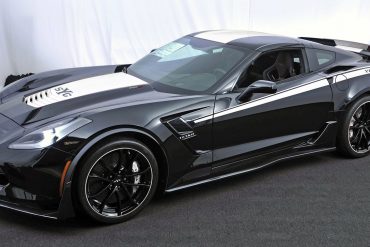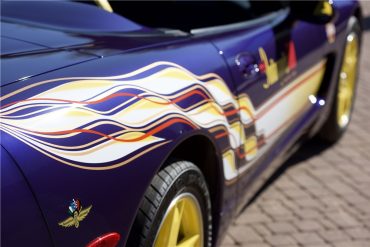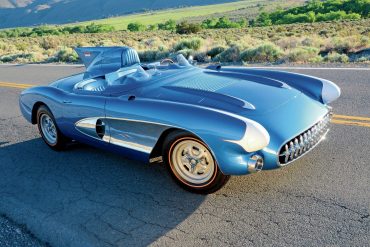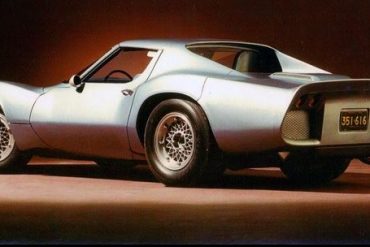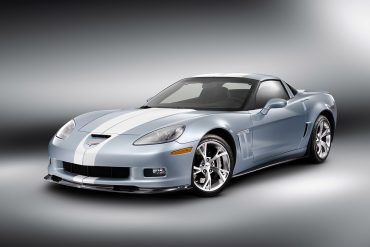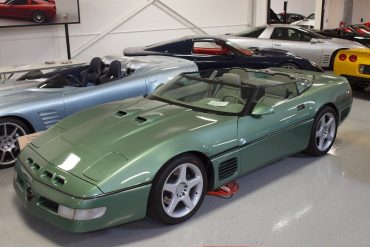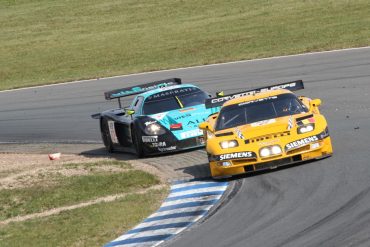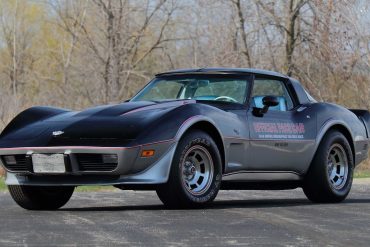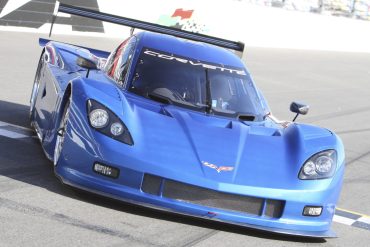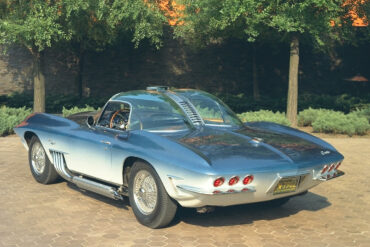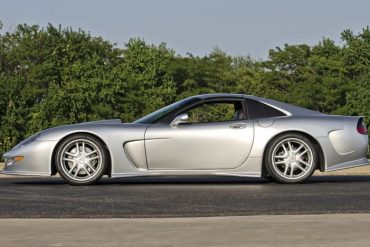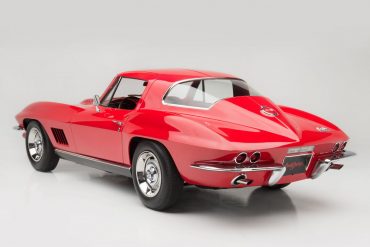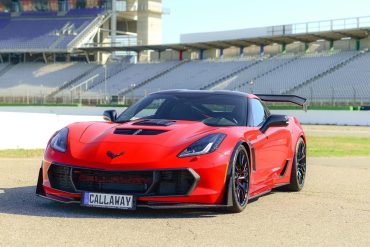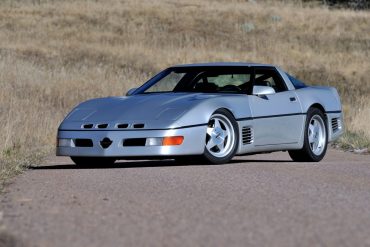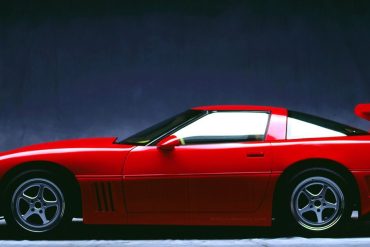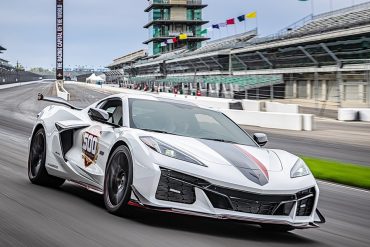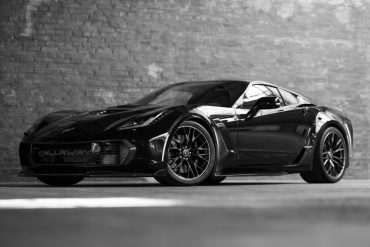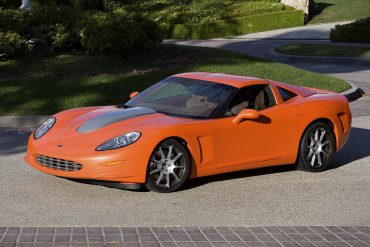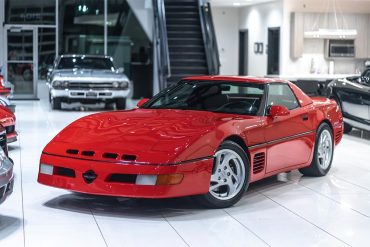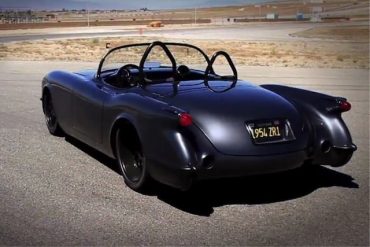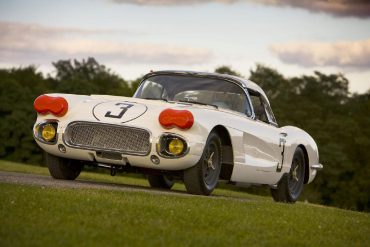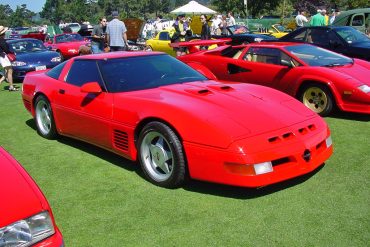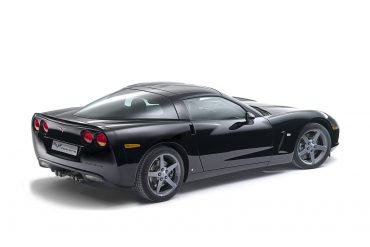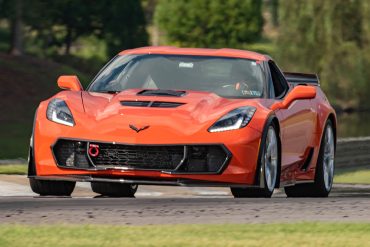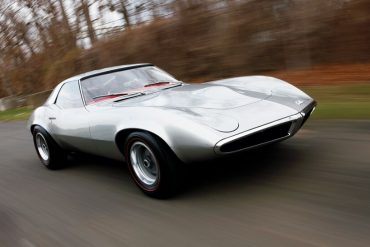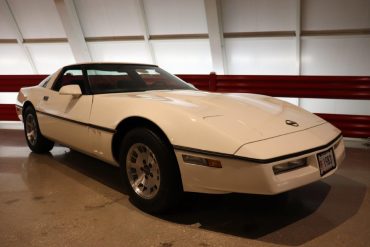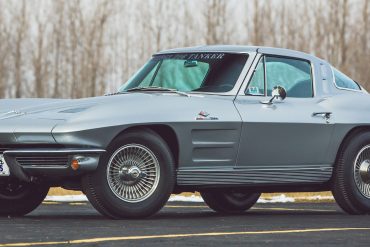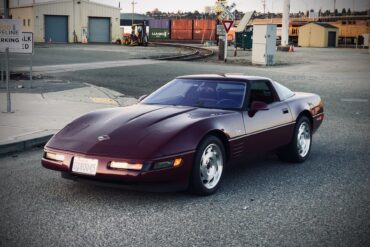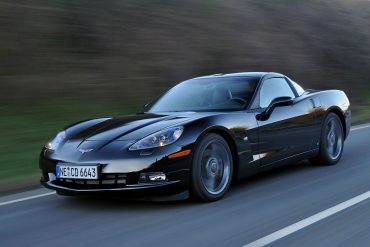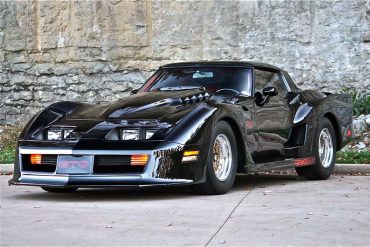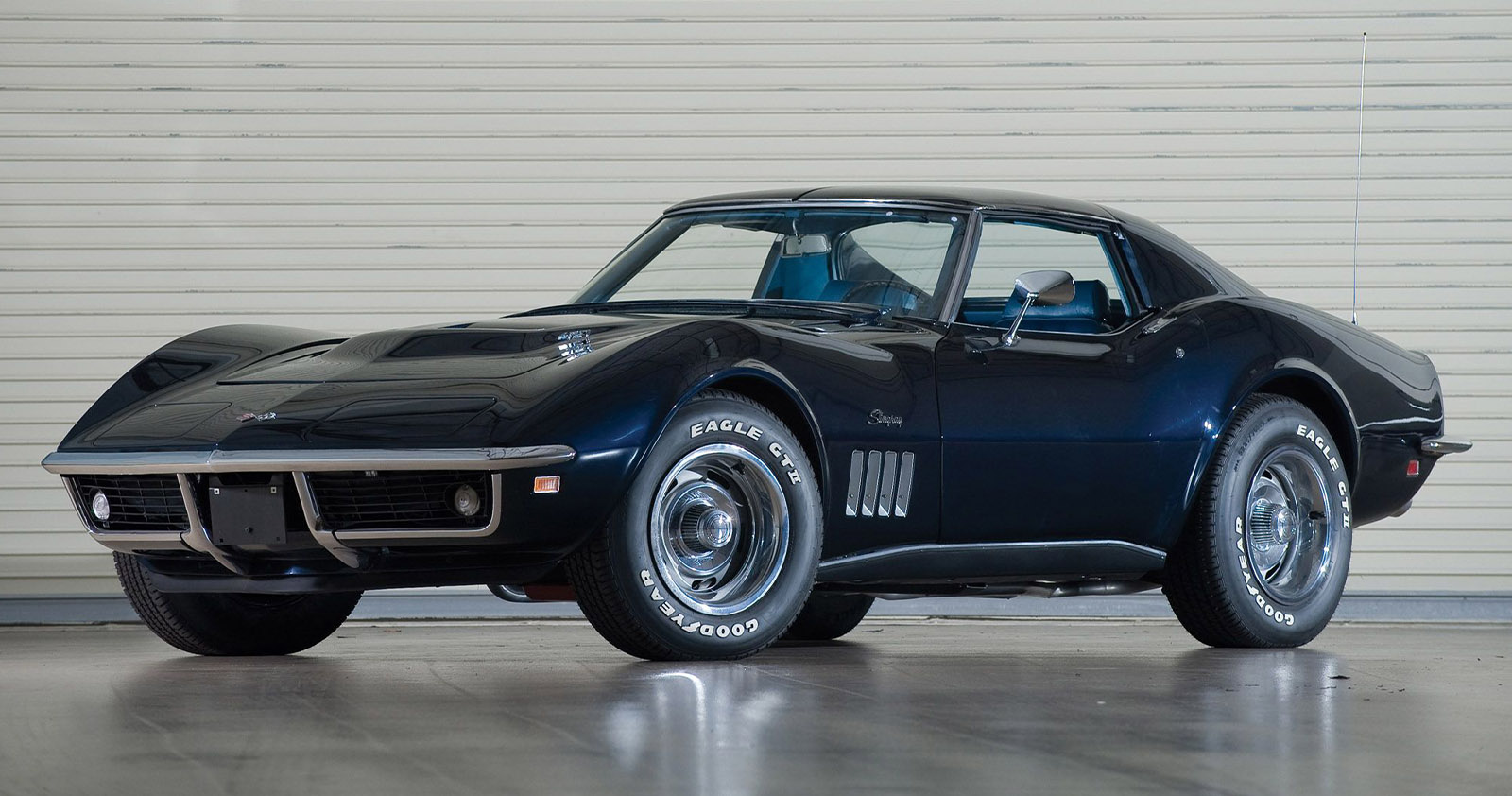The Specialty Engineering Group (SVE) has partnered with Chevy to create the 2019 Yenko/SC Corvette Stage II. This new Corvette, which is the creation of Specialty Vehicles Engineering in cooperation with Chevrolet, delivers an incredible 1000 horsepower and 875 lb-ft of torque. Better yet, it's an option that you can order from your local Chevy dealership.
While it was not the rarest Corvette Pace Car Replica ever manufactured by GM, the 1998 Chevrolet Corvette Pace Car Replica was – and remains – one of the most desirable pace car replicas ever made. This is primarily due to the fact that this replica is nearly identical to the actual pace cars that were used during the 1998 Indianapolis 500. It was fitting given that 1998 also marked the brand's 20th anniversary as "Official Pace Car" of this momentous race.
Designed mid-1956 for Harlet Earl’s son Jerry, the SR-2 was put into racing duty in 1957. The car debuted at Daytona Beach in 1957 with a high-speed canopy, fender skirts and bullet-shaped frond headlights. Driven by Betty Skelton and Buck Baker, the car won the modified class with an average speed of 93.074 mph. The SR-2 also finished second in class for the flying mile with a top speed of 152.886 mph.
The XP-819 Corvette prototype was introduced in 1964 by Frank WInchell and Larry Shinoda as the first, experimental, rear-engine Corvette coupe. The XP-819 was developed in the mid-1960's as an engineering exercise to determine if a rear-engine platform was right for the Corvette program. During that time, Chevrolet was still under a racing ban.
The Carlisle Blue Grand Sport Concept is painted in a very cool Carlisle Blue exterior with exquisite Pearl White full-length racing stripes. This color combination is highlighted with Silver-painted Torque 2 wheels. The Corvette also benefited from carbon fiber front splitter and rockers, a full-width rear spoiler, and a Grand Sport style hood blanket. For the interior, Chevrolet has opted for Ebony/Titanium leather with blue stitching, a new Bose Premium Audio with nine speakers.
In 1989 Callaway introduced a Speedster which was the culmination of their styling, engineering and trimming talents. Their first example was a bright green ZR1, which had a severely chopped windscreen, no side mirrors, eighteen inch wheels and a vibrant blue leather interior stitched purposefully from Germany. Nothing about Callaway’s Speedster was reserved, and this is especially true when investigating the specification. The car had 450 horsepower.
The Corvette C5-R was part of a plan by General Motors and their Chevrolet brand to create a factory team to participate in grand touring races not only in North America, but also elsewhere in the world, most notably at the 24 Hours of Le Mans. GM had previously been against approving factory support for Corvette racing programs, although the IMSA GT Championship's Corvette GTPs had seen some support until they ended competition in 1989.
While the redesign gave the Corvette a fresh look for the new model year, Chevrolet also recognized the importance of commemorating the car's quarter-century of production. For the first time in the brand's history, two special-edition Corvettes were introduced for the 1978 model year: the Silver Anniversary Edition and the Indy Pace Car coupes. On March 15, 1977, the 500,000th Corvette rolled off the assembly line at Chevrolet's St. Louis manufacturing plant.
For the 2012 Grand-Am season, Chevrolet was the first to unveil it's new DPG3 bodywork. This Corvette body kit will be built by Pratt & Miller and will be sold to customer teams. These body kits will fit on any existing Coyote, Riley, or Dallara chassis. This Corvette DP will be powered by a 5.0L V8 making 530BHP @ 7,000rpms and 450ft-lbs at 5,500rpms.
The XP-755 was designed and the prototype was built in the beginning of 1961. Bill Mitchell was very excited about the double-bubble roof, the side exhausts and rear. It is equipped with a single four-barrel carburetor that produces upwards of 425 horsepower. The Corvette XP-755 Concept had a streamlined design, pointed snout and outlandishly future looking elements everywhere. The 1961 Mako Shark I (XP-755) was an early concept.
Callaway has built a firm reputation for producing some of the most sophisticated and advanced Corvette-based automobiles. Introduced in 1998, Callaway’s C12 continued this proud legacy. Designed, developed and constructed by two top German engineering and development companies, Callaway and IVM, the C12 was intended as a bespoke, high-performance car that offered its occupants a civilized interior and relaxed ride. One of the most respected Corvette super-cars ever.
The L88 was a special option package developed under the direction of Zora Arkus-Duntov, director of GM’s performance division. First introduced in 1967, the L88 Corvette featured a highly modified version of Chevy’s 427-cubic-inch V-8 engine. Although this engine received a factory horsepower rating of 435, actual engine output was somewhere between 540 and 580 horsepower, giving the “stock” L88 enough power to run a quarter-mile in the high-11-second range!
Callaway Competition has constructed some of the most successful GT3 race cars in history. Competing against the world’s premier marques, Callaway is currently recognized as the most successful race team of the ADAC GT Masters series. To celebrate Callaway Competition’s 25th anniversary, we’re building 25 unique, specially-equipped “Callaway Champion” road cars. The Z06-based Champions are built by our expert craftsmen.
This Sledgehammer reached 254.76 mph at the Transportation Research Center (TRC) in Ohio and became the world’s fastest street-legal car for some time. It was built up by Reeves Callaway in Connecticut as an example of what was possible with the new ZR1 and and turbocharging its LT5 engine. The result was a 898 bhp coupe that still retained luxuries such as air conditioning and a radio. It got this power by using a NASCAR-spec block with Mahle pistons and a massive turbo.
Reeves Callaway has always had a dream of competing a Corvette of his own at the 24 Hours of Le Mans, France. The idea begin with the body work for a street version, but one thing led to another, and a full race version was completed as well. The street version is almost identical to the race version because the hood, tail, rocker panels, and lower door halves, are all made of carbon fiber, just like the race version.
The Indianapolis 500 is, for lack of a better term, America’s Race. It is part of the triple crown of...
The 25th Anniversary Edition is a hardened up version of Callaway's Corvette SC757, which in turn is based on a C7-generation Corvette Z06. It features a supercharged V8 that pumps out 757-horsepower and 777 pound-feet of torque. The supercharger is a GenThree Callaway unit with the company's TripleCooled intercooler system. A high-flow intake system feeds that beast. Callaway's Level Two HD Cooling System also helps it avoid the overheating issues that plagued C7 Z06s.
The Callaway C16 was Callaway’s 16th major automotive project. It was a limited production, bespoke automobile, built to order, by what the Press called “the best specialist engineers in the business”. These cars are seriously fast, beautiful, and exclusive. The C16 was a direct competitor for the Porsche GT3, the Lamborghini Murcielago, the Ferrari 599 GTB. It was both faster and more capable than its competitors, at less cost.
Chevrolet's introduction of the LT1 in 1992 as the base engine in the Corvette phased out the L98 based Callaway Twin Turbo. Previously, Callaway Corvettes made their increased power through positive manifold pressure; now they made it through increased displacement and finesse. Initially called the CL1 or CR1, they designated the chassis they were built upon. They were based on the pushrod LT1 cars (CL1) or the 32 valve DOHC LT5 ZR-1 cars (CR1).
Timeless Kustoms Breathes New Life into a Classic 1954 Corvette When introduced in 1953, the original Corvette was celebrated by...
Briggs Cunningham – A Man and His Dream The Early Days of Le Mans The 24 Hours of Le Mans...
When Chevrolet changed gears to the LT1 engine, Callaway revealed their new SuperNatural line and the CR1 based on the ZR1’s LT5. Options for the CR1 included the radical Aerobody, German upholstery and special wheels, brakes and exhausts. The CR1 used a larger displacement to produce either 475 or 490 bhp.
To celebrate the success of the Corvette Racing program, especially at the prestigious 24 Hours of Le Mans race, Chevrolet made the decision to manufacture a limited number of special-edition Corvettes that would be sold exclusively in Europe. This special-edition car was limited to just 250 units and marketed to European consumers as the Victory Edition Corvette.
For the 2014 model year, the Chevrolet team sculpted the seventh-generation Corvette into the most sophisticated, most feature-packed Corvette produced to date. Facing a daunting challenge, new technology enabled Callaway engineers to produce breathtaking power with seamless transition into and out of positive manifold pressure. Entirely new, Callaway’s patented GenThree supercharger design improved airflow quality and increased charge air cooling capacity.
When first introduced to the world by Pontiac in 1964, the car showed so much promise that Chevrolet (allegedly) put a swift end to its development to prevent its production from hindering the sales of the Corvette. Afterall, with the introduction of the 1963 Split-Window Corvette, Chevy was finally seeing an increase in sales, something lacking for most of the first-gen.
Within the National Corvette Museum's Skydome sits the only remaining 1983 Corvette; a car best characterized as a survivor, in every sense of the word. According to the Macmillan Dictionary, a survivor is, "someone or something that still exists after every other member of a group has died or been destroyed." This as it may, the 1983 Corvette lives up to this title.
The first Z06 was actually an option package first offered with the 1963 Corvette. The package was developed by Corvette's legendary lead engineer and racing advocate Z0ra Arkus-Duntov. The Z06 option was designed to allow consumers to bolster the 1963 "Split-Window" Corvettes performance and handling capabilities for use on the race track. Selecting regular production option (RPO) Z06 when ordering a Corvette resulted in a car equipped with some tasty options.
In 1993 just 448 ZR-1 Corvettes were produced and only 240 of them were 40th Anniversary Edition cars. The 40th Anniversary Package consists of a deep and glossy Ruby Red exterior finish over a matching Ruby Red interior with leather adjustable sport seats. A Corvette with both of these highly desirable packages is rare and special. At the heart of the ZR-1 is the 405-horsepower LT5 V8 engine mated to a 6-speed manual transmission.
In addition to the limited-edition Corvette Victory Edition, a second special version of our favorite all-American sports car was introduced in spring, the Corvette Competition. This model, built in limited numbers on the basis of the C6 Corvette, bears strong links to motor sport too, in which the Corvette has proven highly successful. The Corvette Competition was competitively priced and one heck of a package.
The major differences between the 1980 and 1982 Daytona and the 1981 GTO are the hood, the tops of the rear fenders, and the rear spoiler/bumper cover. The Daytona had an elaborate, short vertical fin on top of the rear fender that turned several turns “in and back,” flowing to the wide, long, table-like rear spoiler. The GTO’s rear fenders pontoons are the same as.


